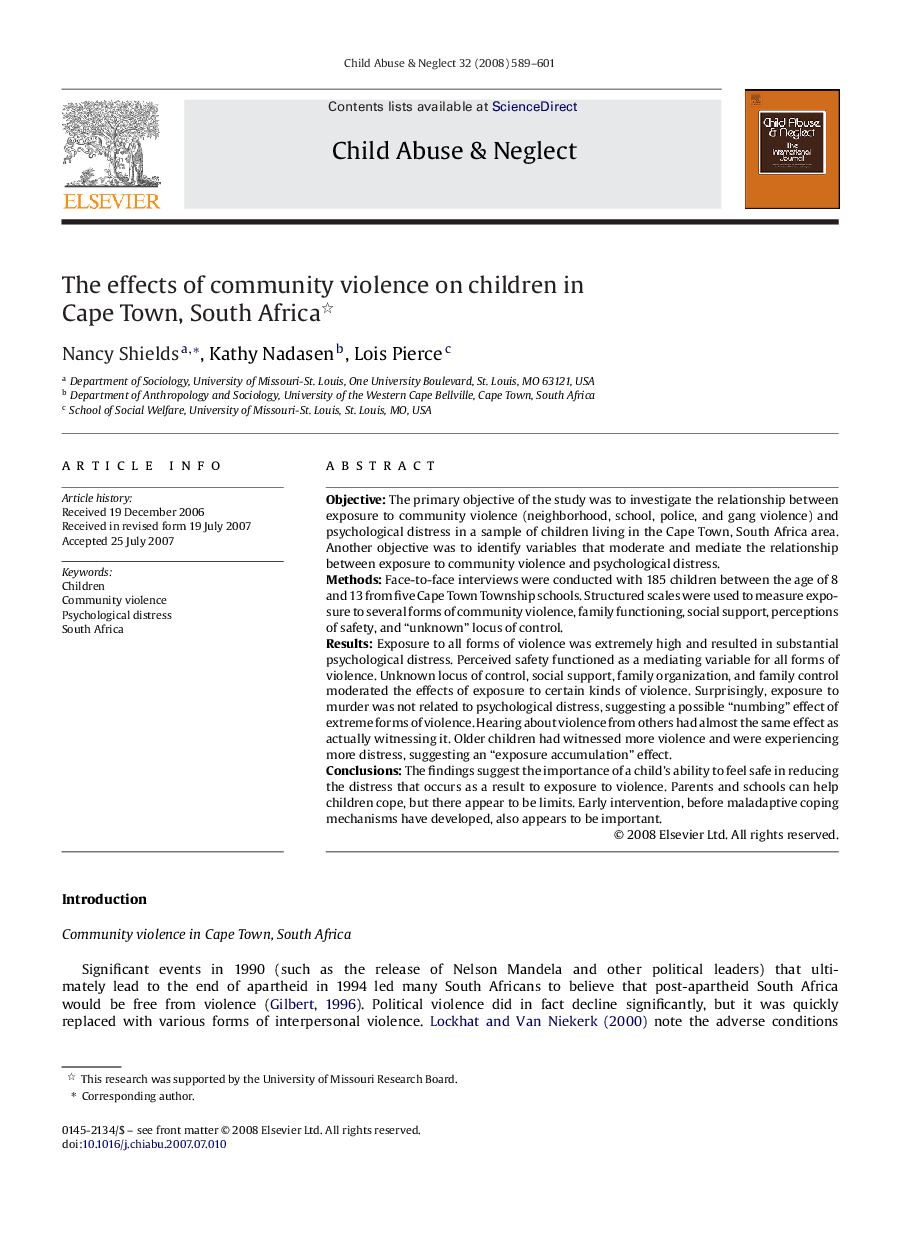| Article ID | Journal | Published Year | Pages | File Type |
|---|---|---|---|---|
| 345662 | Child Abuse & Neglect | 2008 | 13 Pages |
ObjectiveThe primary objective of the study was to investigate the relationship between exposure to community violence (neighborhood, school, police, and gang violence) and psychological distress in a sample of children living in the Cape Town, South Africa area. Another objective was to identify variables that moderate and mediate the relationship between exposure to community violence and psychological distress.MethodsFace-to-face interviews were conducted with 185 children between the age of 8 and 13 from five Cape Town Township schools. Structured scales were used to measure exposure to several forms of community violence, family functioning, social support, perceptions of safety, and “unknown” locus of control.ResultsExposure to all forms of violence was extremely high and resulted in substantial psychological distress. Perceived safety functioned as a mediating variable for all forms of violence. Unknown locus of control, social support, family organization, and family control moderated the effects of exposure to certain kinds of violence. Surprisingly, exposure to murder was not related to psychological distress, suggesting a possible “numbing” effect of extreme forms of violence. Hearing about violence from others had almost the same effect as actually witnessing it. Older children had witnessed more violence and were experiencing more distress, suggesting an “exposure accumulation” effect.ConclusionsThe findings suggest the importance of a child's ability to feel safe in reducing the distress that occurs as a result to exposure to violence. Parents and schools can help children cope, but there appear to be limits. Early intervention, before maladaptive coping mechanisms have developed, also appears to be important.
